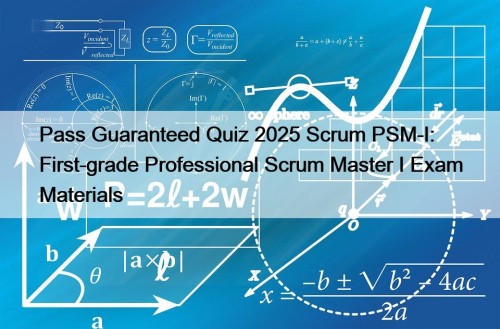Most Popular
 Pass Guaranteed Quiz 2025 Scrum PSM-I: First-grade Professional Scrum Master I Exam Materials
Pass Guaranteed Quiz 2025 Scrum PSM-I: First-grade Professional Scrum Master I Exam Materials
P.S. Free & New PSM-I dumps are available on Google ...
 Service-Cloud-Consultant Pdf Braindumps, Valid Service-Cloud-Consultant Study Guide
Service-Cloud-Consultant Pdf Braindumps, Valid Service-Cloud-Consultant Study Guide
If you choose the test Service-Cloud-Consultant certification and then buy ...
 Reliable Reliable XK0-005 Test Notes bring you the best XK0-005 Books PDF for CompTIA CompTIA Linux+ Certification Exam
Reliable Reliable XK0-005 Test Notes bring you the best XK0-005 Books PDF for CompTIA CompTIA Linux+ Certification Exam
BONUS!!! Download part of PrepAwayETE XK0-005 dumps for free: https://drive.google.com/open?id=1E7TkE1K0xm45l04Ose75OjNUEfrWjI6BOur ...



H35-663 Pass-Sure materials & H35-663 Quiz Torrent & H35-663 Passing Rate

About your blurry memorization of the knowledge, our H35-663 learning materials can help them turn to very clear ones. We have been abiding the intention of providing the most convenient services for you all the time on H35-663 study guide, which is also the objection of us. We also have high staff turnover with high morale after-sales staff offer help 24/7. So our customer loyalty derives from advantages of our H35-663 Preparation quiz.
Huawei H35-663 (HCSP-Field-5GtoB Service Planning and Design V1.0) Certification Exam is an excellent opportunity for professionals who are interested in advancing their careers in the telecommunications industry. By passing H35-663 exam, candidates will demonstrate their knowledge and skills in the field of 5G service planning and design, and they will be well-positioned to take advantage of the many exciting opportunities that are emerging in this rapidly evolving field.
Why Do You Need to Trust on Huawei H35-663 Exam Questions?
With the HCSP-Field-5GtoB Service Planning and Design V1.0 (H35-663) web-based practice exam, you get the same features as a H35-663 desktop practice test software. It includes real Huawei H35-663 exam questions to help you understand each topic. The web-based H35-663 Practice Exam is compatible with every operating system including Mac, Linux, iOS, Windows, and Android. This Huawei H35-663 practice exam works fine on Chrome, Internet Explorer, Microsoft Edge, Opera, etc.
To prepare for the Huawei H35-663 exam, candidates can take advantage of various study materials, such as training courses, study guides, and practice exams. Huawei also offers online resources, such as forums and communities, where candidates can connect with other professionals and share their knowledge and experiences. By investing time and effort in their preparation, candidates can increase their chances of passing the Huawei H35-663 Exam and earning the HCSP-Field-5GtoB Service Planning and Design V1.0 certification.
Huawei HCSP-Field-5GtoB Service Planning and Design V1.0 Sample Questions (Q24-Q29):
NEW QUESTION # 24
Which of the following are challenges for 5G network planning and design? Select all that apply.
- A. Spectrum availability
- B. Network slicing
- C. Network security
- D. Interference
Answer: A
NEW QUESTION # 25
What are the key network functions in 5GtoB service planning and design?
- A. User equipment (UE) and base stations
- B. Network management and orchestration
- C. All of the above
- D. Core network and cloud infrastructure
Answer: C
Explanation:
The key network functions in 5GtoB service planning and design include user equipment (UE) and base stations, core network and cloud infrastructure, and network management and orchestration.
User equipment (UE) and base stations are the physical components of the 5G network that provide wireless connectivity to end-user devices. UE includes smartphones, tablets, and other mobile devices, while base stations include radio access network (RAN) components such as small cells and macro cells.
The core network and cloud infrastructure provide the backend functions of the 5G network, including data processing, storage, and transmission. The core network includes components such as the mobile edge computing (MEC) platform, which enables applications to run closer to the end-user device, and the network function virtualization (NFV) infrastructure, which allows network functions to be virtualized and run on cloud servers.
Network management and orchestration are critical components of 5GtoB service planning and design. They enable network operators to manage and control the 5G network, including monitoring network performance, configuring network components, and optimizing network resources. Network management and orchestration also enable network operators to provision new services and applications quickly and efficiently, improving time-to-market for new 5G services.
Overall, the key network functions in 5GtoB service planning and design work together to provide a high-performance, scalable, and flexible 5G network that can meet the diverse needs of business customers.
NEW QUESTION # 26
How does beamforming improve 5G network performance?
- A. By increasing signal strength
- B. By improving data rates
- C. All of the above
- D. By reducing interference
Answer: C
Explanation:
Beamforming is a technique used in 5G networks to improve network performance. It involves directing a wireless signal towards a specific location or device, rather than broadcasting it in all directions. This is achieved by adjusting the phase and amplitude of the signals transmitted by the antennas in the network.
By focusing the signal in a specific direction, beamforming can improve network performance in several ways:
1. By reducing interference: Since the signal is focused in a specific direction, interference from other signals in the environment is reduced, leading to better network performance.
2. By increasing signal strength: By focusing the signal in a specific direction, the signal strength at the intended location or device is increased, leading to better network performance.
3. By improving data rates: Since beamforming can increase signal strength and reduce interference, it can also improve data rates, allowing for faster and more reliable data transfer.
Overall, beamforming is a powerful technique that can significantly improve the performance of 5G networks, and is likely to play an important role in the deployment of 5G networks in the future.
NEW QUESTION # 27
If an operator wants to optimize 5G network coverage, which of the following techniques should they use?
- A. None of the above
- B. Both a and b
- C. Sectorization
- D. Cell splitting
Answer: B
Explanation:
To optimize 5G network coverage, an operator can use both cell splitting and sectorization techniques.
Cell splitting involves dividing a large cell into smaller cells to improve coverage and capacity in areas with high user density. This technique can help reduce interference and improve network performance by allocating more resources to smaller cells.
Sectorization involves dividing a cell into multiple sectors, with each sector using a different set of frequencies or time slots. This technique can help improve network performance in areas with high traffic volumes by increasing the number of available channels and reducing interference.
By using both cell splitting and sectorization techniques, operators can optimize 5G network coverage and performance, especially in areas with high user density and heavy traffic volumes.
NEW QUESTION # 28
Which of the following are key parameters for 5G network planning and design? Select all that apply.
- A. Antenna gain
- B. Bandwidth
- C. Cell size
- D. Coverage probability
Answer: C
Explanation:
All of the above are key parameters for 5G network planning and design. Cell size determines the coverage area of a base station and affects the network's capacity and performance. Bandwidth is the amount of data that can be transmitted over the network and determines the network's speed and capacity. Coverage probability is the probability that a user can receive a signal with sufficient quality at a given location, and it determines the network's coverage area and reliability. Antenna gain is the measure of an antenna's ability to focus energy in a particular direction, and it affects the network's coverage and capacity.
NEW QUESTION # 29
......
Examinations H35-663 Actual Questions: https://www.dumpsfree.com/H35-663-valid-exam.html
- Book H35-663 Free 🙉 Latest H35-663 Exam Pattern 🤏 Latest H35-663 Mock Exam 🙏 Simply search for ➥ H35-663 🡄 for free download on 【 www.dumps4pdf.com 】 🕎H35-663 Accurate Test
- Quiz Newest H35-663 - Actual HCSP-Field-5GtoB Service Planning and Design V1.0 Test Pdf 🖌 Enter ⮆ www.pdfvce.com ⮄ and search for ▶ H35-663 ◀ to download for free ❣Test H35-663 Dumps Demo
- Quiz Newest H35-663 - Actual HCSP-Field-5GtoB Service Planning and Design V1.0 Test Pdf 🌰 Easily obtain 【 H35-663 】 for free download through 「 www.lead1pass.com 」 🗜H35-663 Dumps Reviews
- H35-663 Pdf Format 🖌 Certification H35-663 Dumps 🚐 H35-663 Latest Exam Pass4sure 🥅 Download 「 H35-663 」 for free by simply entering ▶ www.pdfvce.com ◀ website 👵Latest H35-663 Dumps
- H35-663 Accurate Test 🍙 Valid H35-663 Exam Notes 🍪 Latest H35-663 Mock Exam 🍭 Simply search for ⇛ H35-663 ⇚ for free download on ➡ www.passtestking.com ️⬅️ ✔Demo H35-663 Test
- Latest H35-663 Dumps 🐔 Latest H35-663 Exam Pattern 🚹 Demo H35-663 Test ⛳ [ www.pdfvce.com ] is best website to obtain ✔ H35-663 ️✔️ for free download 🧿H35-663 Valid Learning Materials
- Free PDF Quiz Huawei - Newest H35-663 - Actual HCSP-Field-5GtoB Service Planning and Design V1.0 Test Pdf 🌮 ☀ www.pass4leader.com ️☀️ is best website to obtain ➤ H35-663 ⮘ for free download 🎇Demo H35-663 Test
- Valid Actual H35-663 Test Pdf - Leader in Qualification Exams - Fantastic Huawei HCSP-Field-5GtoB Service Planning and Design V1.0 📨 Go to website [ www.pdfvce.com ] open and search for ☀ H35-663 ️☀️ to download for free 📓Exam H35-663 Overview
- Demo H35-663 Test 💕 H35-663 Accurate Test 🧂 Test H35-663 Dumps Demo 🪂 Search for ▛ H35-663 ▟ and download it for free immediately on ➡ www.pass4leader.com ️⬅️ 📀Exam H35-663 Overview
- Valid Actual H35-663 Test Pdf - Leader in Qualification Exams - Fantastic Huawei HCSP-Field-5GtoB Service Planning and Design V1.0 🏤 Search for ✔ H35-663 ️✔️ and easily obtain a free download on 「 www.pdfvce.com 」 🥤Book H35-663 Free
- Valid H35-663 Exam Notes 🥃 H35-663 Latest Exam Pass4sure ☯ Test H35-663 Dumps Demo 💱 Open ▛ www.testkingpdf.com ▟ enter ➥ H35-663 🡄 and obtain a free download 🌲Latest H35-663 Dumps
- H35-663 Exam Questions
- skilldigi.com best100courses.com demo4.matgarsefar.com housamnajem.com dkdigitalworkspace.online www.yuliancaishang.com primeeducationcentre.co.in www.isohs.net zahrainternationalacademy.com eictbd.com
Tags: Actual H35-663 Test Pdf, Examinations H35-663 Actual Questions, H35-663 Intereactive Testing Engine, Free H35-663 Practice, H35-663 Latest Exam Cost